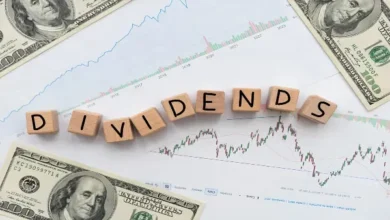Treasury Yields fall on Fed Rate Hike Speculation as Wall Street Rises
As investors pushed toward wagers that the U.S. Federal Reserve is likely to refrain from increasing interest rates next week, global markets increased on Thursday and Treasury yields decreased.
The figures released on Thursday, which showed a sharp increase in the number of Americans submitting new claims for unemployment benefits, supported this viewpoint.
The S&P 500 increased by 0.52%, the Dow Jones Industrial Average up by 0.48%, and the Nasdaq Composite increased by 0.84% on Wall Street.
While Asian markets had a difficult evening, the benchmark STOXX 600 index for all of Europe remained unchanged. Just 0.1% of the Asia-Pacific equities outside of Japan’s largest MSCI index increased. The MSCI’s broadest index of global equities increased nevertheless by 0.43% to remain just below a 13-month high, aided by advances on Wall Street.
According to Stephen Innes, managing partner at SPI Asset Management, “the key question for risk markets is whether the Fed might follow up with a hike of their own next Wednesday or whether they’ll finally keep rates on hold after a relentless hiking pace.”
According to Innes, the Fed’s top officials have recently expressed a willingness to hold off on raising interest rates for the time being.
The Treasury market seemed to concur, as rates fell in response to worries that a possible recession may be approaching in light of the sharp increase in new U.S. unemployment benefits claims.
The yield on benchmark 10-year notes dropped to 3.7334%, while the two-year Treasury yield, a key indicator of how the market will interpret future Fed policies, decreased to 4.5252%.
The difference between the yield on two-year and ten-year Treasury notes was -79 basis points. A recession is said to be predicted by an inverted curve, when debt with shorter maturities yields more than debt with longer maturities. [US/]
However, other economists cautioned against assuming that rate increases had ended.
Canada surprised markets this week by raising interest rates to a 22-year high of 4.75% owing to an overheated economy and persistently rising inflation, virtually an exact replica of Australia’s surprise rate hike this week.
According to Societe Generale analyst Kit Juckes, “the main theme to everything out there is the bond sell-off and the realization that the pause (in the rate hike cycles of central banks) doesn’t mean the end.”
He said, “We are definitely repricing rate expectations higher,” noting that traders were also doubting the conventional wisdom that the Federal Reserve will finish its rate-hike cycle far earlier than the European Central Bank.
Most traders will refrain from making any significant purchases or sales since the Fed, ECB, and Bank of Japan all have interest rate decisions coming up next week.
The dollar declined 0.67% after reaching a three-month high last week due to lower Treasury rates. Compared to the other leading currencies in the world, it has increased by more than 2.5% in the last month. [USD/]
According to the CME FedWatch tool, markets are now pricing in a 64% likelihood of the Fed keeping interest rates unchanged next week as opposed to a 78% chance the day before. However, most traders anticipate a 25 basis point increase in July.
TOUGH TIMES
Japan’s yen gained 0.8% to 138.90 per dollar after newly released statistics revealed that the country’s economy expanded faster than previously believed in January through March.
The Canadian dollar maintained gains following the Bank of Canada’s unexpected increase as the euro increased by 0.77% over $1.07 once again.
According to CMC Markets analyst Michael Hewson, “The RBA and Bank of Canada have somewhat put the cat among the pigeons.” Repricing rate decreases is taking place. They are being postponed from this year’s finish to the next year.
The price of crude oil declined on the commodities markets, with futures for both Brent and U.S. crude down more than 1.5% to $75.77 and $71.23 a barrel, respectively, on the day. [O/R]
Following a 1% decline in the previous session, gold prices stabilized, with spot gold rising 1.3% to $1,964.08 per ounce. [GOL/]
Turkey’s lira plummeted to yet another record low in developing markets. On indications that Tayyip Erdogan’s freshly re-elected administration is giving up on an 18-month policy of keeping the currency on a tight leash, the lira plunged 7% on Wednesday.






